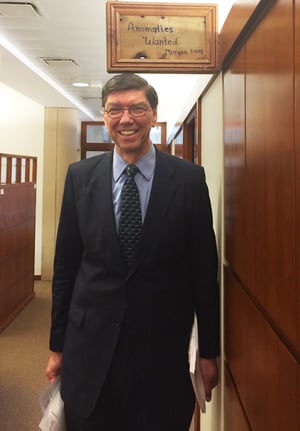 Clay Christensen developed the theory of disruptive innovation in 1995 to describe a process where a new product takes root at the bottom of an existing market and works its way up, disrupting existing companies whose offerings may be too expensive or otherwise inaccessible to much of the market.
Clay Christensen developed the theory of disruptive innovation in 1995 to describe a process where a new product takes root at the bottom of an existing market and works its way up, disrupting existing companies whose offerings may be too expensive or otherwise inaccessible to much of the market.
While Clay's groundbreaking theory has stood the test of time and has been helping companies inform their strategies for nearly 20 years, he still actively seeks examples of companies that deviate from his model of disruption and believes that studying anomalies is the best way to refine and improve your theories.
Most recently, Tom Bartman, a Senior Research Fellow at Clay’s Forum for Growth and Innovation here at Harvard Business School, put the disruptive innovation theory to the test when he and his colleagues examined Tesla Motors, a company that manufactures premium electric cars, for a recent Harvard Business Review article.
Bartman and his team set out to determine whether Tesla was truly employing a disruptive innovation strategy within the automobile industry and, if so, whether it has successfully created a new top-down model of disruption, starting at the high end of the market and working its way down.
Clay is so eager to identify anomalies that he even hung a handmade wood sign above his office door at Harvard Business School – that’s right, he is a hobbyist woodworker in his spare time! Another fun fact: Clay is the same height as most doorways (6 feet, 8 inches tall).
While Bartman ultimately determined that Tesla did not make the cut, we can all learn from the Forum’s analysis of the company about what makes a new product, service or technology truly disruptive rather than just an interesting breakthrough.
Check out the full article on HBR.com or in the May 2015 print issue - and feel free to let us know your thoughts!
Additional reading on this topic:
https://hbr.org/2015/04/why-tesla-wont-be-able-to-scale
https://hbr.org/2015/05/the-future-of-electric-vehicles-is-golf-carts-not-tesla
Learn how to apply Clay's theories to capitalize on emerging opportunities and solve your organization's toughest strategic challenges with HBX Disruptive Strategy with Clay Christensen, a new online program from Harvard Business School.







